Open-source monitoring tool allows users to track and monitor their systems, networks, and infrastructure for performance and security issues in real-time. They offer real-time data insights and visualization to help users optimize performance and troubleshoot issues, minimize downtime, and ensure the reliability of the IT infrastructure.
Open-source monitoring tools are free and customizable, with strong community support. This helps businesses to use monitoring software without paying for a license.
Geekflare has researched and listed the best open-source monitoring tools based on features such as scalability, user interface, integration capabilities, and usability.
- 1. Nagios Core – Best Overall
- 2. Zabbix – Best for IT Infrastructure Monitoring
- 3. Checkmk – Best for Server Monitoring
- 4. Prometheus – Best for Time-Series Data Monitoring
- 5. Cacti – Best for Network Graphing Solution
- 6. OpenNMS Horizon – Best for Network Monitoring
- 7. Icinga – Best for Enterprise
- 8. Netdata – Best for Real-Time Performance Monitoring
- 9. M/Monit – Best for Process Monitoring
- 10 LibreNMS – Best for Automatic Network Discovery
- 11 Graphite – Best for Metrics Monitoring
- 12 Observium – Best for Network Insights
- 13 Pandora FMS – Best for Small Business
- 14 Sensu – Best for Cloud-Native Monitoring
- 15 Telegraf – Best for Metrics Collection
- Show less
You can trust Geekflare
Imagine the satisfaction of finding just what you needed. We understand that feeling, too, so we go to great lengths to evaluate freemium, subscribe to the premium plan if required, have a cup of coffee, and test the products to provide unbiased reviews! While we may earn affiliate commissions, our primary focus remains steadfast: delivering unbiased editorial insights, and in-depth reviews. See how we test.
Nagios Core
Best Overall
Nagios Core is a robust, open-source monitoring and alerting engine. It operates as the foundation for many Nagios projects and provides critical functionality for monitoring and managing the performance of your IT infrastructure.
Nagios Core enables you to schedule checks, process check results, handle events, and send alerts. It also offers advanced features like performance graphing and auto-discovery, which other Nagios projects and plugins handle.
Nagios Core has a flexible architecture that allows for the extension of its functionalities through APIs and add-ons, enabling the creation of custom plugins to enhance its core capabilities.
With a large community behind it and a robust ecosystem of add-ons, Nagios Core is a flexible and reliable tool for monitoring your IT infrastructure. It’s beneficial if you want a low-cost, customizable monitoring tool.

Nagios Core Pros
Highly customizable with a vast library of plugins.
Flexible architecture allows easy extensibility.
Extending functionality with different Nagios agents
Capable of monitoring a wide range of devices and applications.
Supports both agent and agentless monitoring methods.
Nagios Core Cons
Installation and setup require a good understanding of Linux systems.
Limited built-in reporting and graphing capabilities.
Zabbix
Best for IT Infrastructure Monitoring
Zabbix stands out as a premier open-source monitoring tool for network hardware. It is adept at collecting and analyzing network traffic metrics and excels at identifying and swiftly resolving network issues.
You can gather network metrics through SNMP metrics or by deploying a Zabbix agent. Collect detailed network metrics, including traffic, bandwidth usage, link status, interface status, packet loss, and more, to gain deep insights.
Monitor the health of your network devices efficiently by tracking device availability and uptime, power supply status, CPU and memory statistics, and temperature readings. Zabbix also allows you to set problem thresholds and respond to network issues with timely alerts.
Zabbix allows users to create escalation logic for network issues based on seriousness, involving users and departments. Further, you can create workflows and define working hours and channels.
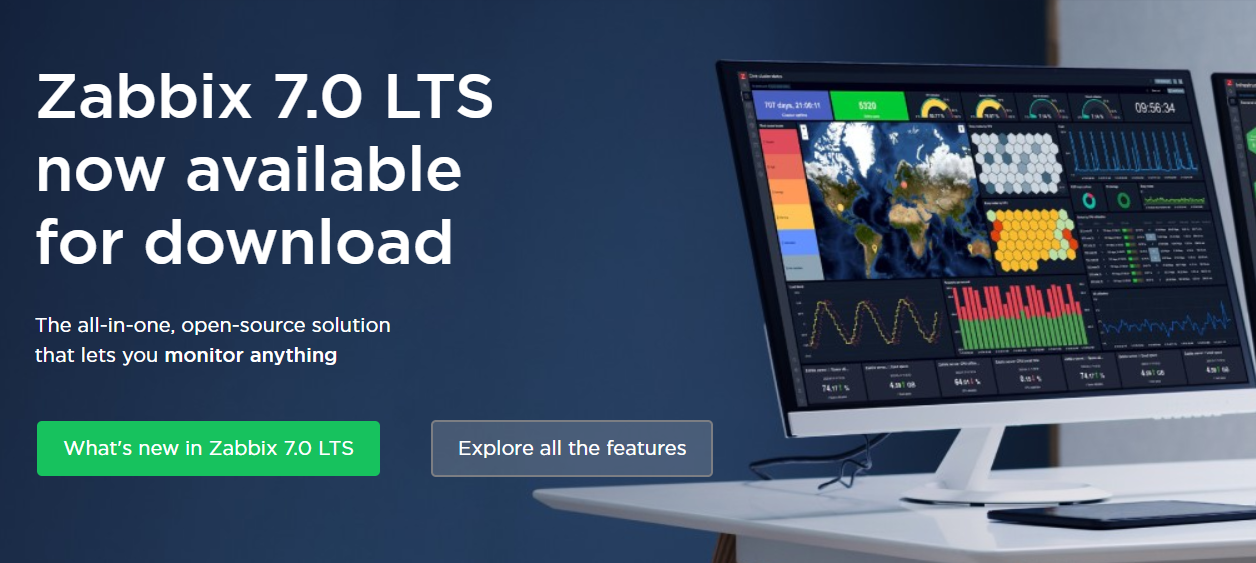
Zabbix Pros
Allows customized monitoring with extensive alert and condition customization.
Monitors servers, networks, and websites with detailed metrics and alerts.
Graphs real-time and historical trends for better monitoring.
Highly scalable and works on Windows, Linux, and Docker.
Regular updates and open-source community support.
Zabbix Cons
Has a steep learning curve
Uses extensive server resources for large loads.
Checkmk
Best for Server Monitoring
Checkmk is a highly scalable open-source monitoring software for small to enterprise-level IT infrastructures. It provides a complete overview of your full IT infrastructure, including public cloud providers, data centers, networks, and servers.
Checkmk’s advanced agent management automates the discovery and configuration of networks. This open-source monitoring system offers a dynamic dashboard, and the Check-API allows for customization and extension of the code.
You can use Checkmk’s powerful interactive visualization tools, effective alert system, SLA reporting, and log and event analysis to monitor networks of any size or complexity.
Checkmk offers four editions for monitoring needs: Free RAW for midsize IT infrastructures, Enterprise for large enterprises, Cloud for hybrid and cloud environments, and MSP for highly scalable and flexible monitoring of applications, hybrid, and cloud infrastructures.
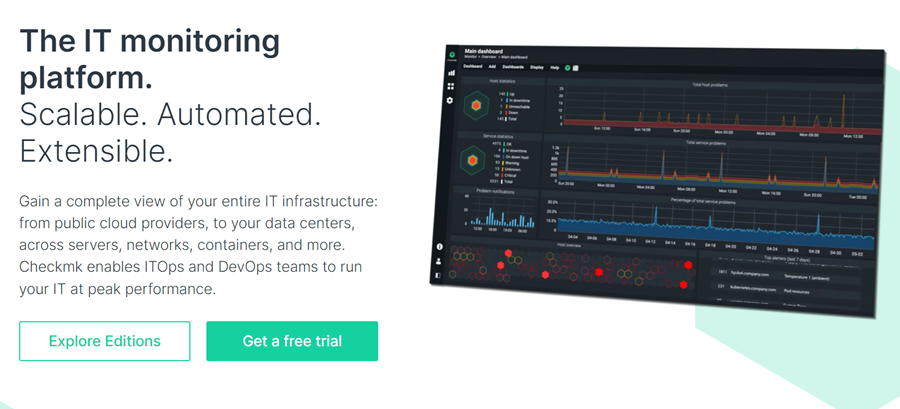
Checkmk Pros
Simple setup and quick deployment.
Offers in-depth local and remote database monitoring.
Highly customizable for personalized monitoring.
Comprehensive monitoring for popular Kubernetes distributions.
Can manage large setups with limited resources.
Checkmk Cons
Because of the high customization, it’s not very friendly to beginners.
Advanced features are primarily in premium versions.
Prometheus
Best for Time-Series Data Monitoring
Prometheus is an open-source monitoring system for cloud-native applications or environments. It employs a dimensional time-series data model and identifies the data using a metric name and a set of key-value pairs.
Prometheus uses a powerful query language named PromQL to collect and analyze the time series data. PromQL generates graphs, tables, and alerts analyzing the time series data. You can visualize the data using multiple modes in Prometheus.
Prometheus stores data in memory and local disk in an efficient custom format, allowing independent servers to rely solely on local storage. The PromQL stores dimensional data while generating alerts. It handles alerts and notifications with an efficient alert manager.
Furthermore, Prometheus supports client libraries in over 10 languages, has diverse capabilities, and is one of the top NodeJs monitoring tools. It includes exporters, which enable third-party data integration.
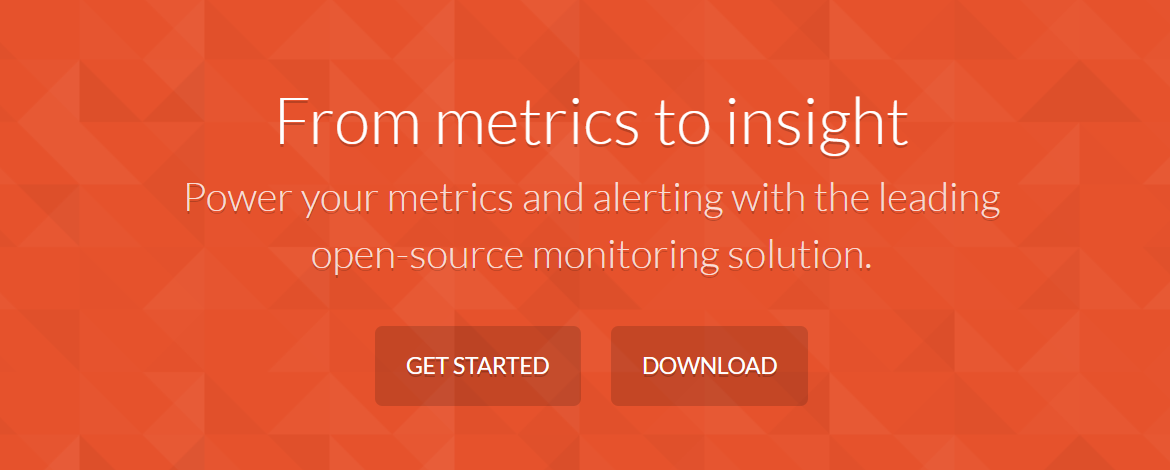
Prometheus Pros
Management of all devices in a single web portal.
Grafana dashboards and metrics with a strong query language.
Collecting and gathering system and application-related metrics.
Prometheus Cons
Most customers complain about a better user interface.
The query language promQl is quite tricky.
Cacti
Best for Network Graphing Solution
Cacti is a network graphing solution and fault management framework for operational monitoring. It uses RRDTool for data storage and graphing and offers multiple templates that automate device management.
Cacti supports various data acquisition methods, features a theming engine, and multilingual support. The Graph View option lets you closely analyze your network health and performance.
For basic tracking, Cacti users can utilize various plugins, such as the THold Plugin, SysLog Plugin, MacTrack Plugin, etc. These plugins allow you to manage network devices in real-time.
Moreover, the user-friendly interface makes monitoring small IT infrastructures to complex networks very convenient. Cacti’s automated dashboard gives beginners a simple view of network performance, making it a great performance management tool.
Cacti Pros
Automatically find devices on a network.
Highly customizable with numerous plugins.
Compatible with a wide range of devices through SNMP and Syslog
Real-time network performance monitoring
Cacti Cons
Primarily offers support through FAQs and forums, which may be insufficient.
Requires significant effort to configure and customize to your needs.
OpenNMS Horizon
Best for Network Monitoring
OpenNMS Horizon is a versatile open-source tool for monitoring local and remote networks. It stands out as the world’s first fully open-source, enterprise-grade network service monitoring tool.
OpenNMS Horizon is highly flexible and scalable. It allows you to operate complete inventory management, comprehensive fault management, performance management, traffic monitoring, and alerting capabilities and effortlessly integrate with your business workflows.
OpenNMS Horizon includes many sophisticated features for monitoring local and distributed networks. Core features include remote data collection, alarm correlation, scalability, business service monitoring, issue identification, alarms or alerts, events, and traffic monitoring.
OpenNMS Horizon’s user interface is intuitive and user-friendly. A web-based dashboard provides a detailed overview of your network. You can also download Horizon’s base package for free.
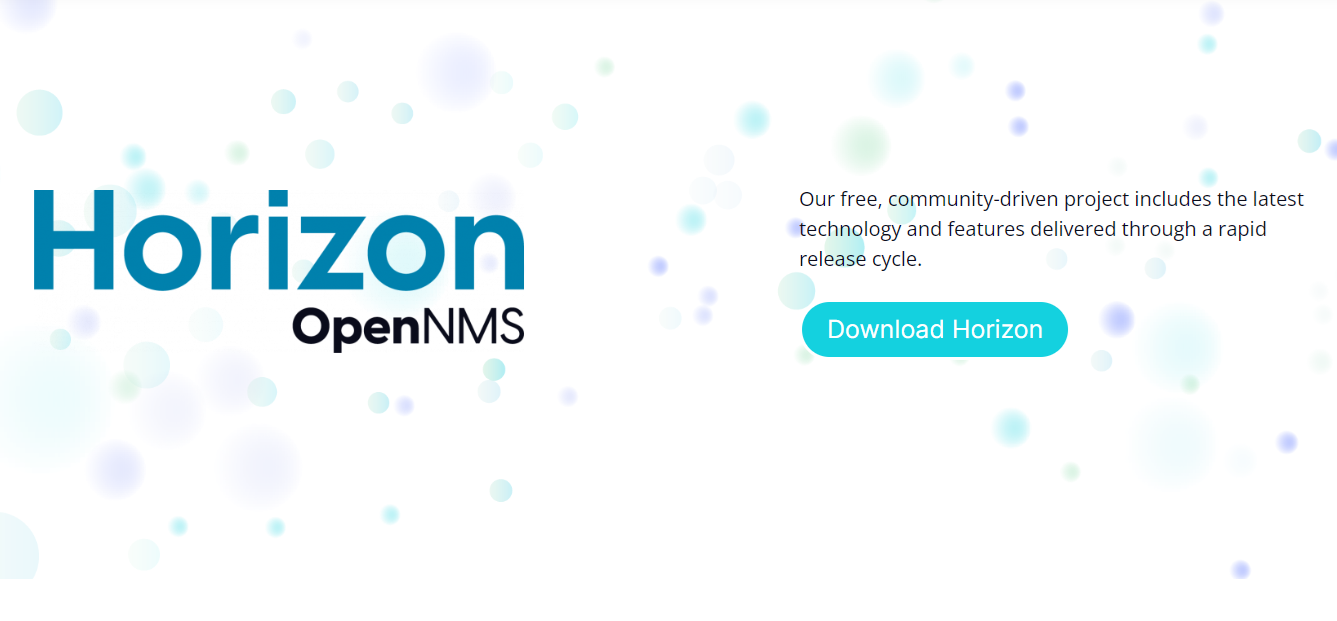
OpenNMS Horizon Pros
Monitor practically anything on a network, including service availability, performance, latency, etc.
Web-based dashboard displays the entire network with detailed data.
Strong online community and support.
Custom notifications and alerts to quickly identify and fix network issues.
OpenNMS Horizon Cons
Requires advanced networking knowledge for optimal use.
It’s difficult to figure out the code base without an IDE.
Icinga
Best for Enterprise
Icinga is an intelligent network monitoring tool that allows you to manage devices from multiple vendors using a single interface. Its web interface lets you monitor the current state of all your networks in one place.
Icinga can detect network issues, send alerts, and provide insights on how network devices are being used to help with future planning.
Icinga performs SNMP monitoring checks, including network interface health, traffic throughput, interface errors, CPU load, memory usage, and hardware health. It also supports monitoring vendor-specific hardware data with specialized plugins.
Network devices can send instant alerts to an SNMP Trap Receiver with Icinga. The tool integrates with Logstash to handle SNMP traps from multiple devices. Moreover, it collects bandwidth usage data from your network interfaces and stores it in a time-series database.
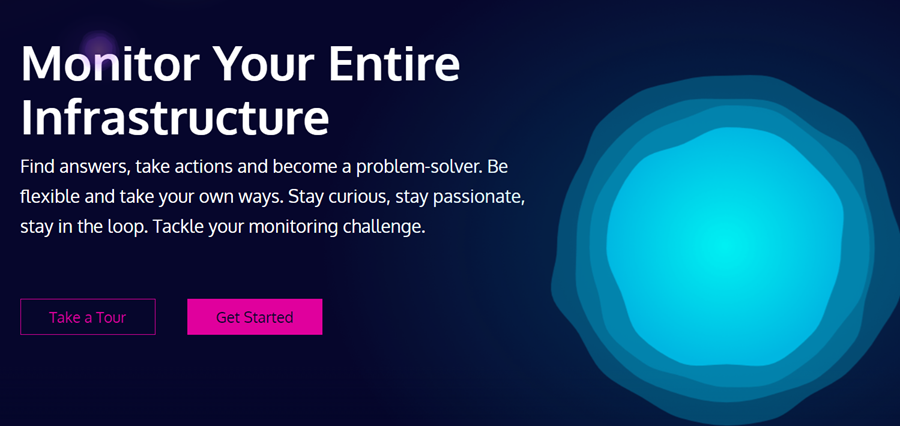
Icinga Pros
Easy integration with Nagios plugins.
Extensive customization through plugins and scripts.
Uses TLS encryption for secure communication between the client and server.
Secures client-server communication with TLS.
Icinga Cons
Configuration can be tricky and has a steep learning curve.
Dashboard can feel overwhelming and cluttered.
Netdata
Best for Real-Time Performance Monitoring
Netdata is an open-source monitoring tool that simplifies and optimizes your IT operations. It offers real-time visualizations, enhanced data security, reliable issue detection, and alerts at an affordable cost.
It simplifies IT monitoring by managing the collection, storage, visualizations, and alerts for every metric without extensive configuration. Using machine learning models to analyze metrics lets you focus on IT operations instead of decoding monitoring data.
Netdata ensures data fidelity by storing your data exclusively on your systems. It collects data momentarily from your distributed networks using Netdata Agents, providing scalability and database decentralization.
Netdata’s automated dashboards provide meaningful visualizations for all metrics and robust Kubernetes monitoring. Moreover, the Netdata Agent uses only a few resources on your network hardware CPU, and monitoring latency is low.
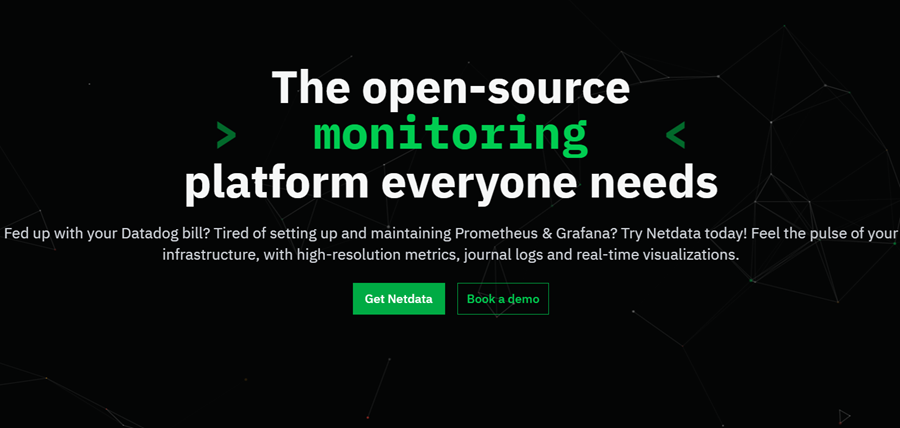
Netdata Pros
Offers precise metrics in real-time across multiple platforms, including physical, virtual, cloud, and edge environments.
Customizable dashboards and interactive graphs.
Automated service discovery and configuration.
Zero configuration Kubernetes monitoring.
Netdata Cons
Limited compatibility with Windows environments.
Netdata is only accessible via a web browser.
M/Monit
Best for Process Monitoring
M/Monit is a free, open-source monitoring tool for Unix and Linux systems. It can automatically maintain and repair systems and offers all the essential features needed for system monitoring and error recovery.
M/Monit can react to errors and perform corrective actions, making it highly reliable. It monitors your system’s process characteristics, including CPU usage, memory, and network interfaces, ensuring comprehensive oversight.
You can use M/Monit to monitor system boot processes and other daemons running on the local host. It can also scan files and directories on localhost, alerting you to unauthorized changes.
Additionally, M/Monit can monitor network connections to servers on local hosts and remote hosts. It allows you to test programs and scripts at specific times, ensuring they run correctly and efficiently.

M/Monit Pros
Scalable enough to handle both small and large-scale network
Automatic maintenance and repair
Monitors files, directories, and filesystems for changes.
Monitors server performance, network traffic, and application health.
Supports monitoring network connections on local hosts or remote hosts.
M/Monit Cons
Only capable of monitoring Unix systems
Requires configuration for specific use cases.
LibreNMS
Best for Automatic Network Discovery
LibreNMS is a PHP/MySQL/SNMP-based network monitoring tool that supports various operating systems and network hardware. It offers numerous features to help you monitor your network’s health and performance.
LibreNMS automatically discovers your entire IT network using protocols like CDP, FDP, LLDP, OSPF, BGP, SNMP, and ARP. It includes a highly flexible alerting system that can send notifications via email, Slack, and other channels.
For added convenience, LibreNMS offers a mobile-friendly web UI, a native iOS app, and a native Android app. Its user-friendly interface makes it easy to use and scalable for networks of all sizes.
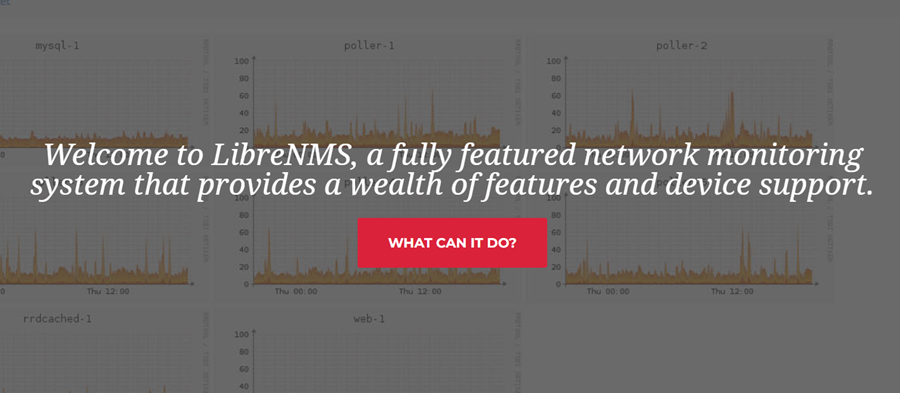
LibreNMS Pros
User-friendly interfaces, auto-discovery, and ease of use
Real-time monitoring and alerting
Auto-discovers equipment and integrates with other tools.
LibreNMS Cons
It uses browsers instead of Windows or Mac apps.
Some users have reported scalability issues
Graphite
Best for Metrics Monitoring
Graphite is an open-source enterprise-ready graphing and network monitoring tool that can be installed on either simple hardware or cloud infrastructure. With Graphite UI, you can track website, application, business service, and server performance using IT infrastructure time series data.
You can also use MetricFire, a hosted service that runs Graphite without any setup or installation. MetricFire hosts Graphite in a web app, making it easy to start.
MetricFire enhances Graphite with features like cluster storage, data tagging, team reports, various integrations, and multi-channel alerts. You need to send your metrics, which are then visualized on Graphite and Grafana.
Graphite requires little coding to feed time-series data and supports metrics aggregation. Moreover, it supports custom event alerts and collects time-series data using StatsD.

Graphite Pros
Little coding is needed to feed Graphite time-series data
Metrics aggregation and integration with tools such as Collectd, StatsD, Sensu, Logstash, etc.
Suitable for tracking the performance of websites, applications, business services, and networked servers.
Can generate time-series graphs on demand with customizable graphs.
Graphite Cons
Complex setup procedure
Unable to gather data in real-time
Observium
Best for Network Insights
Observium is a comprehensive network monitoring and management platform providing real-time device health and performance data. It can automatically discover your network, gather performance indicators, and alert you when an issue occurs.
Observium supports various network devices, operating systems, and platforms, such as Cisco, Windows, Linux, HP, Juniper, Dell, and FreeBSD. It also allows you to set custom problem thresholds and receive alerts when a network anomaly or issue occurs.
Observium can access your network’s historical data. These long-term performance data reports in metrics and visuals can improve your system capacity and accident planning.
Observium Pros
Automatic network discovery
Scalable and real-time monitoring
Efficient tracking of both small and large networks.
Provides accurate, real-time data on network devices.
Observium Cons
Lack of documentation and community support.
Difficult to fully customize despite easy initial setup.
Pandora FMS
Best for Small Business
Pandora FMS is an all-in-one open-source network monitoring tool. It offers network monitoring, UX monitoring, cloud monitoring, server and application monitoring, and open-source log management.
Pandora FMS can automatically detect network interfaces and create network maps. It provides real-time statistics on network devices, usage reports, and bottlenecks. It also offers cloud and virtual monitoring, log supervision, and user experience monitoring. Its system inventory gives a complete overview of your IT infrastructure.
Pandora FMS comes with customizable dashboards and report-building capabilities. It offers API integration and multi-channel alerts and can be used by multiple customers on a single platform.
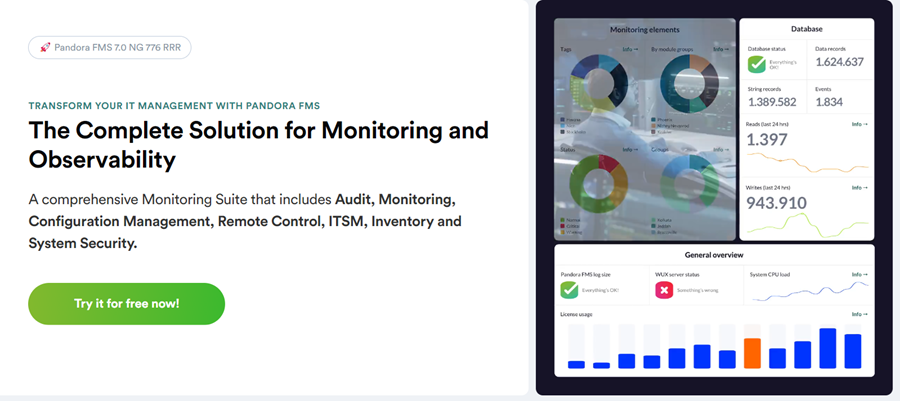
Pandora FMS Pros
Highly customizable with custom modules and open-source checks.
Can monitor small to large, complex networks.
Allows for the creation of custom dashboards for targeted monitoring.
Active alerting system that accurately notifies about issues.
Pandora FMS Cons
Subscription and plan costs can be expensive, especially for small companies.
Users complained about occasional performance lags with large data sets.
Sensu
Best for Cloud-Native Monitoring
Sensu is a multi-cloud open-source monitoring software that consolidates existing monitoring tools to act as an observability pipeline. It can collect, filter, and transform monitoring events, making filling gaps in observability easy.
Sensu offers features like health checks, custom performance metrics, log management, network issue management, multi-channel alerts with deduplication, and automatic endpoint scaling.
Sensu includes monitoring plugins and integrations for various use cases, with pre-configured editable templates that allow flexible monitoring without coding.
Moreover, Sensu supports self-healing by triggering service restarts or custom scripts when issues are detected. Besides, the centralized interface also automatically manages complex workflows and common issues.
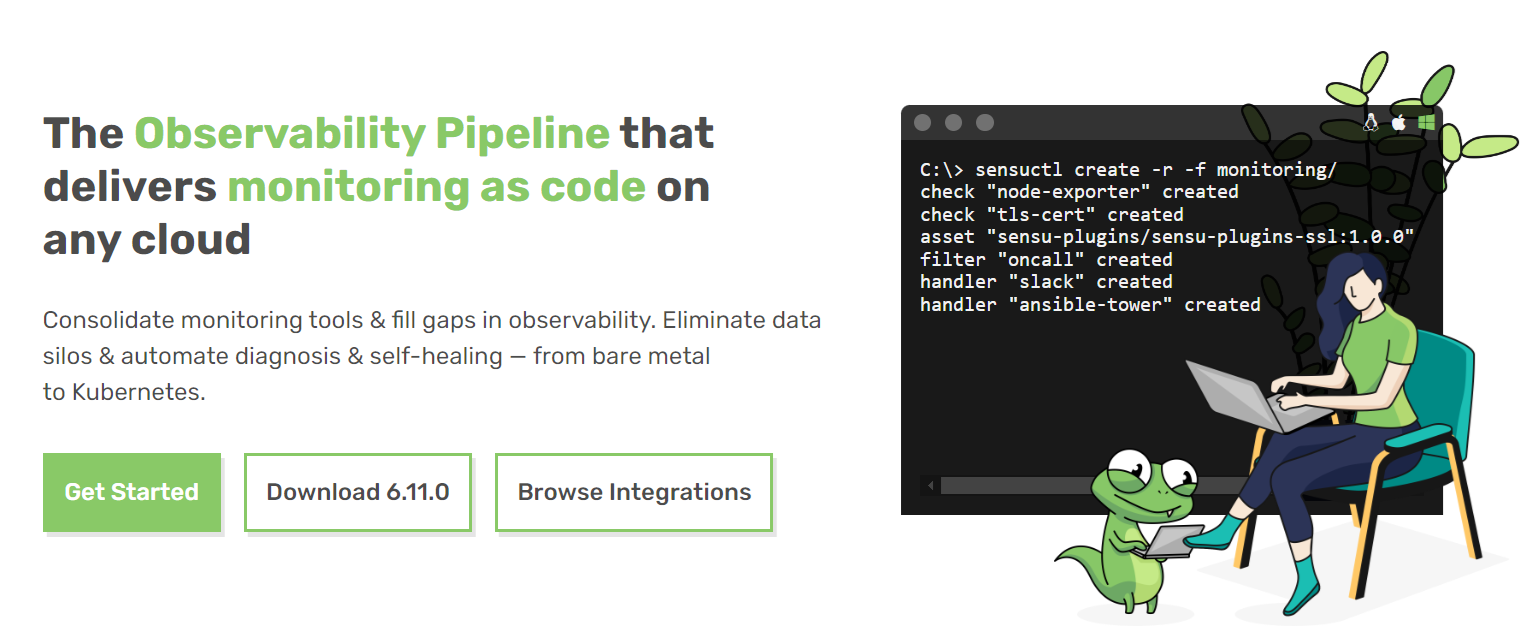
Sensu Pros
Offers a high degree of customization to different thresholds and alerts.
Easily scalable to support both traditional and cloud-native workloads.
Offers comprehensive multi-cloud monitoring.
Sensu Cons
Requires significant effort to set up and configure basic checks.
Saw significant price increases after the release of Sensu Go.
Telegraf
Best for Metrics Collection
Telegraf is a server data collection agent that pulls monitoring metrics and events from your stacks, sensors, and systems. It’s a powerful server-based agent written in Go with no external dependencies.
Telegraf works with plugins and is open-source, meaning anyone can use or modify it. Thanks to its in-memory buffers, it collects and sends data even if the main database is temporarily down.
With over 300 plugins created by the community, Telegraf can handle various data formats like JSON, CSV, and Graphite. It also provides helpful features like scheduling tasks, adjusting for clock drift, and supporting full streaming.
There are four types of Telegraf plugins: Input, Output, Processor, and Aggregate. The output plugin can send data to various storage systems, such as InfluxDB, Graphite, OpenTSDB, Datadog, and Librato.
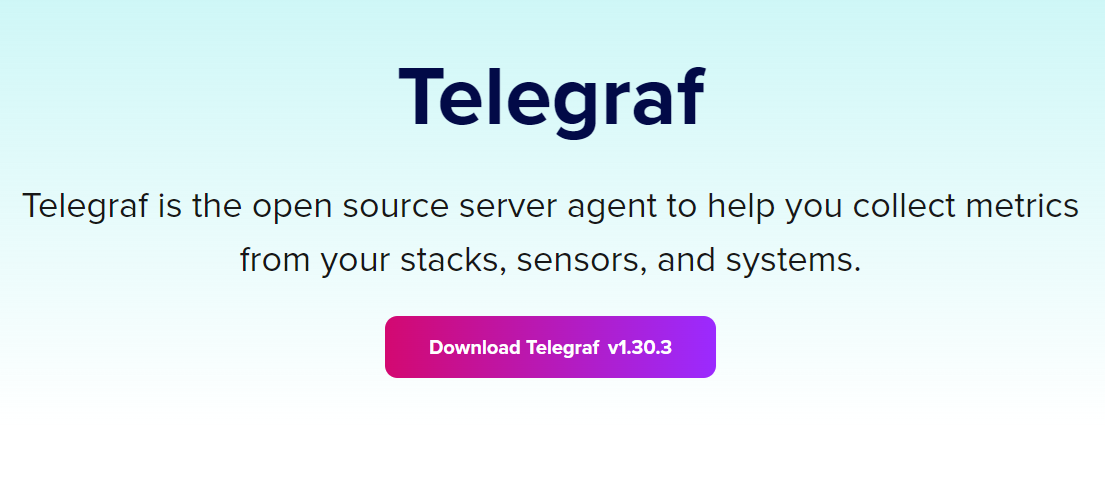
Telegraf Pros
300+ input plugins enable data collection from various sources.
Built-in Data processor plugins to process data transformation.
Real-time reports on network utilization, traffic, and other metrics.
Integrates with InfluxDB to optimize time-series data collection, storage, and analysis.
Telegraf Cons
Multiple Telegraf instances may increase CPU and memory usage.
Some plugins and features are Linux-specific.
Open-Source Monitoring Tools Comparison
Here, we compare the best open-source monitoring tools based on primary focus, setup and configuration, and customization.
| Tools | Primary Focus | Setup and Configuration | Customization |
|---|---|---|---|
| Nagios | Network Infrastructure Monitoring | Requires technical knowledge, command-line configuration | High, supports custom plugins and scripts |
| Zabbix | IT Infrastructure Monitoring | User-friendly web interface, setup wizards | High, customizable templates and scripting |
| Checkmk | Unified Monitoring | Easy setup with auto-discovery and web interface | High, flexible checks and dashboards |
| Prometheus | Time-Series Data Monitoring | Easy basic setup, requires configuration for advanced use | High, supports custom metrics and alert rules |
| Cacti | Network Graphing | Moderate setup, SNMP configuration | Moderate, customizable data sources and graph templates |
| OpenNMS | Network Monitoring | Requires some technical knowledge, web interface | High, extensible with custom scripts and modules |
| Icinga | Infrastructure Monitoring | Moderate, CLI and web-based configuration | High, supports custom plugins and integrations |
| Netdata | Real-time Performance Monitoring | Easy, automatic installation scripts available | Moderate, customizable dashboards and alerts |
| Monit | Process Monitoring | Easy, simple web interface and CLI configuration | Limited, customizable monitoring rules and alerts |
| LibreNMS | Network Monitoring | Easy, web-based auto-discovery | Moderate, customizable graphs and alerts |
| Graphite | Metrics Monitoring, Time-Series Graphing | Requires technical knowledge for setup | High, customizable data retention and aggregation rules |
| Observium | Network Monitoring | Easy, auto-discovery and web interface | Limited device type customization |
| PandoraFMS | All-in-One Monitoring | Moderate, web-based configuration | High, extensive customization through modules and plugins |
| Sensu | Cloud Monitoring | Moderate, requires some configuration for advanced features | High, supports custom checks and handlers |
| Telegraf | Metrics Collection | Easy, plugin-based configuration | High, extensive plugin ecosystem for custom metrics |
What is Open-Source Monitoring Software?
Open-source monitoring software is free and customizable, allowing for tracking of system performance and health within a network. It may require technical knowledge to set up and maintain, but its open-source nature allows for code modification and sharing. It helps businesses by alerting them to problems such as server downtime or slow networks, allowing them to fix issues quickly and avoid downtime.
How to Choose the Best Open-Source Monitoring Tools
Choosing the best open-source monitoring tools requires identifying business requirements, understanding the key features, considering ease of use, reviewing security risks, and conducting POC.
Identify Specific Requirements
It is important to identify what you need to monitor, such as networks, servers, or apps, before selecting a monitoring tool. This will help narrow down the options and ensure that the chosen tool is suitable for your specific environment. For example, Nagios is great for server monitoring, while Zabbix and Icinga focus on network monitoring.
Key Features
Monitoring tools should have features like reporting, alerting, and visualizing data. They should track required metrics and integrate them with existing systems. For example, Prometheus is ideal for custom metrics and alert rules, whereas Cacti excels at data visualization and graphing. Furthermore, Checkmk provides robust interactive visualization and SLA reporting.
Consider Ease of Use and Configuration
It’s always wise to pick a monitoring tool that is easy to set up and install. So you can start smoothly and stress-free. For example, tools like Zabbix, Netdata, and Checkmk have simple interfaces and set-up wizards.
Review Security Features
Ensure your monitoring tool has strong security features like encryption and user authentication. You can use monitoring tools like OpenNMS, which provides custom scripts and modules for added security. Besides, Icinga and Prometheus provide secure communication and custom security configurations to protect sensitive data and ensure compliance.
Research Community and Vendor Support
An active community and excellent vendor support are beneficial in open source. Tools such as Icinga and LibreNMS have active communities and extensive resource support. Similarly, Nagios and Zabbix benefit from robust communities and vendor support.
Conduct a Proof of Concept (PoC)
Use the trail and test the shortlisted monitoring tools in your environment before committing. Perhaps go for a demo leading to a trial. It helps evaluate performance and suitability within your system.
Benefits of Open-Source Monitoring Tools
Cost-effective, community support, trust, and no vendor lock-in are benefits of using open-source monitoring tools.
Cost Efficiency
Open-source monitoring tools are cost-effective alternatives to paid options, providing powerful features that allow for savings and investment in other areas of IT infrastructure.
Community Support and Innovation
Open-source monitoring tools are community-driven and collaborative. The source codes are publicly available for the active community to edit and customize. These tools are highly flexible, so people can write third-party plugins, fix bugs, and make customized dashboards.
Transparency and Trust
Proprietary software codes are private and copyrighted, while open-source codes are transparent and open for everyone to see and modify. The community can inspect and work on bugs, errors, and security flaws in open-source codes.
No Vendor Lock-in
Proprietary software can have hidden costs and make it difficult to switch, while open-source software is flexible and easy to move to a new system if needed. This allows users to choose the best tool without being tied to one vendor.
Best Practices for Effective Monitoring
You need to check your IT system often to keep it running smoothly. It helps you find issues quickly and ensure that everything is working well. Here are some simple steps to help you set up an effective monitoring system:
- Document and map: Start by writing down and mapping each part of your network.
- Select a protocol: Choose a communication protocol to let your network parts send information to the monitoring tool.
- Define baselines: Set up standard behavior metrics to help you see if something is wrong.
- Configure dashboards: Use dashboards to view your network’s performance and health.
- Set up escalation: Plan whom to contact if there’s a crisis, which helps solve issues quickly.
- Choose the right tool: Pick a monitoring tool that fits your needs and budget.
What are other Monitoring Software Available?
Website Monitoring Software
Website monitoring software helps you track, analyze, and improve your website’s functionality, performance, speed, availability, and user experience.
These comprehensive website monitoring tools utilize best practices and methods to ensure your website’s optimal performance. Besides, they can identify threats to your website and generate timely alerts.
Storage Monitoring Software
The storage monitoring software is used to monitor, track, evaluate, and manage physical and virtual storage devices. With them, you can anticipate, identify, and fix problems with virtual, cloud, and on-premise storage systems. Similarly, the performance metrics and reports comprehensively summarize any persisting issues within the storage system.
Application Performance Monitoring (APM) Software
Application performance monitoring tools use performance metrics and insights to maximize the performance of applications that are integral to any business operation.
These APM tools help you run your business applications smoothly by detecting and resolving issues quickly, ensuring minimal downtime, excellent user experience, and lower operating costs.
Cloud Monitoring Software
Cloud monitoring tools monitor and track the performance, availability, security, and health of cloud-based IT systems. These tools provide real-time data to help administrators assess cloud-based infrastructures, alert users, and prevent issues before they reach users.
You can search for the best AWS monitoring tools to see if one meets your needs.
Network Monitoring Software
Network monitoring tools can help you monitor, analyze, and monitor the devices, systems, servers, apps, and clouds that make up your IT network. They provide in-depth performance data and visualization tools to manage IT network performance and predict, detect, and react to threats before they become significant problems.
Server Monitoring Software
Open-source server monitoring tools monitor server status, processes, and performance. Besides, the data collected helps you understand the server’s status and make decisions to improve performance.
You can also use synthetic monitoring tools to monitor your system and servers for optimal performance.
Frequently Asked Questions
The best monitoring tool is the one that suits your specific needs, offers the necessary features, and fits within your budget.
Yes, Prometheus is a free and highly customizable open-source network monitoring and alerting tool. It uses a time-series data model to monitor events within your network.
Yes, Nagios is an open-source monitoring tool for your entire IT infrastructure. You can push the monitoring data to the Nagios server with Nagios agents installed in your network.
Nagios and Prometheus are both open-source network monitoring tools, but they differ in their data collection methods. Nagios uses a push model with agents installed on the network, while Prometheus uses a pull model with a query language to collect data.

